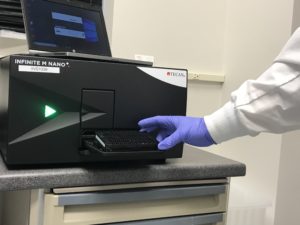Building on the original DPRA (OECD TG 442C), this test assesses multiple substance concentrations and time points to provide quantitative reaction data. This information can assist in determining skin sensitization potency and is being proposed to discriminate UN GHS sub-category 1A substances from those falling into category 1B and/or non-categorized.
Similar to the DPRA assay, kDPRA examines the reactivity of test materials with nucleophilic peptides. High levels of conjugation are indicative of a potential sensitizer.
IIVS participated in the validation of the kinetic DPRA with test method developers BASF and Givaudan in 2018 and is currently being evaluated for a Test Guideline by the OECD.
IIVS offers the kinetic DPRA as a standalone assay or as part of a battery of services with ARE-Nrf2 Luciferase Test Methods (OECD 442D) and the Human Cell Line Activation Test (OECD442E). IIVS also offers the Direct Peptide Reactivity Activation Assay (OECD 442C) and SENS-IS® – a 3D reconstructed epidermis-based assay that quantifies sensitization potency and evaluates skin irritation in a single assay.
Assay Features
- Resolution of GHS Category 1A sensitizers (vs. Category 1B/non-classified)
- Quick Turnaround
- Less expensive than most animal-based studies
- Performed Under OECD 442C Test Guidelines

